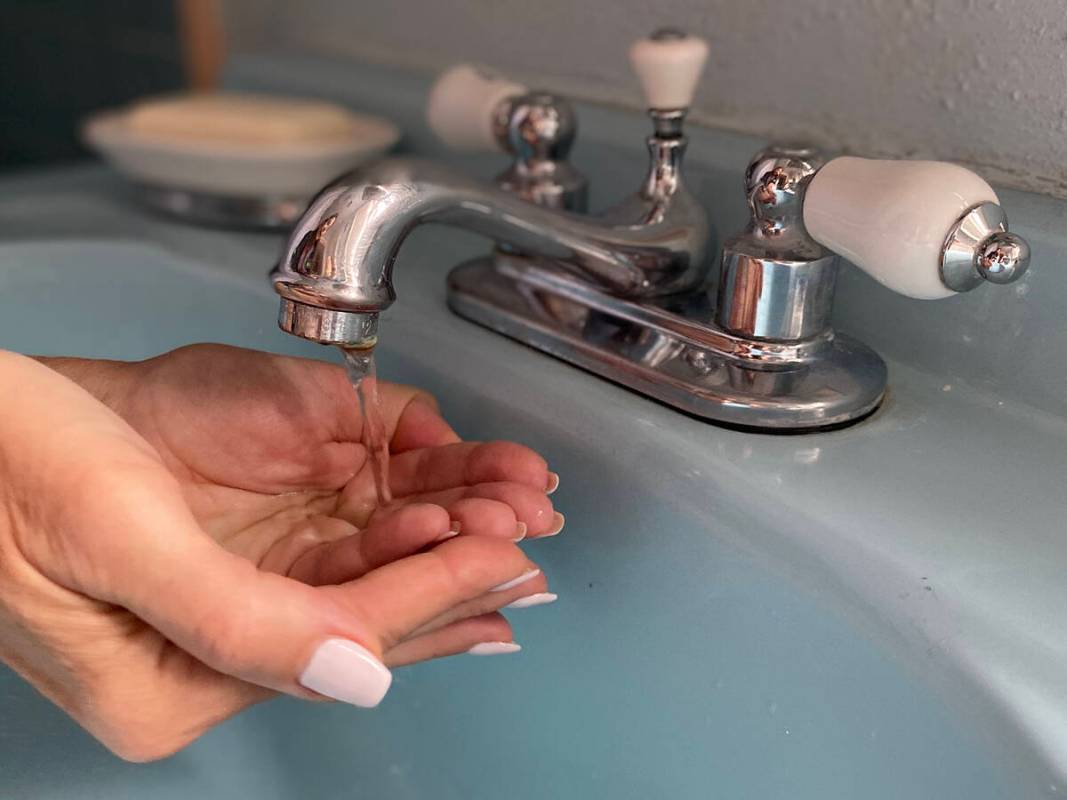
Water is life — a well-known phrase most Americans take for granted. But for us folks living in the desert, we’re more sensitive to what life (or lack thereof) could look like without water. Visual cues like cracks in the desert floor, scorched grass and shrubbery and, most of all, the “bathtub ring” around Lake Mead are all constant reminders of drought.
We should know that 90 percent of our water supply comes from the Colorado River and Lake Mead. Consider this alarming fact: According to the Bureau of Reclamation, the lake is the lowest it’s been since the 1930s. Having dropped to 1,075 feet above sea level has triggered a Tier 1 shortage.
“We’re working with partner, Southern Nevada Water Authority, to ensure we don’t hit a critical level,” explains Patti Aaron, public affairs officer at the Bureau of Reclamation.
Just as these agencies are doing their part to save Lake Mead, so too should we.
“Because we’ve declared a shortage for 2022, it’s important that everyone conserves as much as possible to keep as much water as possible in Lake Mead,” Aaron says.
October’s utility bill included a letter from our new city manager, Taylour Tedder, echoing the same pleas for us to conserve water.
“Our strong efforts as a community to conserve water will help us manage upcoming water reductions … It is the responsibility of everyone who lives and works here to help achieve that goal for our future sustainability,” Tedder states in his letter.
He also lists three key ways to conserve: “1. Follow mandatory seasonal watering restrictions. … 2. Replace your useless grass with a water-smart landscape. … 3. Report water waste. … These three things could mean BILLIONS of gallons saved,” Tedder says. For more information, go to www.bcnv.org/464/City-Utility-Newsletter.
In addition to what our city manager has laid out, I’ve compiled five simple water-saving tips to use in your home.
▶ Shut off faucet when doing tasks. Whether brushing teeth, washing hands, shaving or any task, don’t let the water run until you need it. Especially with all the hand washing we’re doing these days, it will save gallons a day.
▶ Use your dishwasher, properly. Generally speaking, hand washing dishes will use more water than running a full load on its shortest cycle. Also, avoid rinsing dishes before loading them. Instead use a rubber spatula to scrape off dishes into the garbage or compost bucket.
▶ Make your shower a quickie and use low-flow showerheads. It’s shocking how many gallons of water are used in the shower. Some experts claim baths actually use less water than showers. Reality is, most people don’t have the time to run a bath and soak in a tub. I recommend using updated low-flow showerheads. These reduce water usage up to 40 percent, but unlike earlier iterations, won’t sacrifice strong water pressure.
▶ Stop ignoring the “drip” and “run.” According to the Environmental Protection Agency, a showerhead leaking 10 drips per minute wastes more than 500 gallons per year. “That’s the amount of water it takes to wash 60 loads of dishes in your dishwasher,” they write on their website.
The same needless waste applies to dripping faucets and running toilets. The cost of these repairs will quickly be earned back in water savings as well.
▶ Collect warming-up shower water or install an “instant hot.” Most of us let the water run until it’s warm enough to step in, wasting gallons. While waiting for the perfect temp, put a bucket in the shower to collect the water. Then, next time you need to flush, pour the bucket down the bowl in one full swoop; this will trigger a flush, without draining the tank. This clever tip saves you water twofold.
The other option is to install a device or system that creates instant hot water to your shower and faucets. There are several options, like point-of-use heaters and recirculating hot water systems. Do your research and find the best option for your home.
Norma Vally is a seasoned veteran of home improvement; her career includes four seasons as host of Discovery Home Channel’s Emmy-nominated series “Toolbelt Diva.” A columnist and author, Vally splits her time in Southern Nevada, Los Angeles and New York City. Follow her on Facebook at Norma Vally “Toolbelt Diva” and visit her at www.NormaVally.com. Email Norma@NormaVally.com.